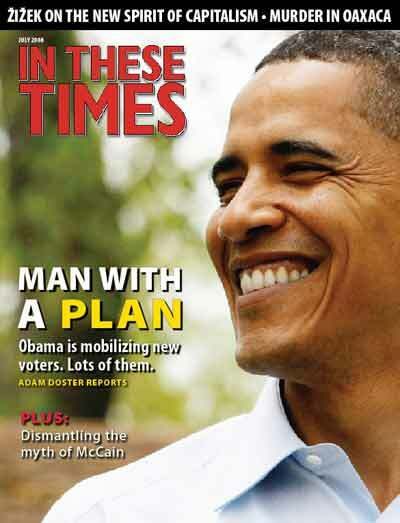Pick almost any metric – fraction of workers in unions, lag of pay behind productivity increases, growing hours of work, rising economic insecurity – and it’s obvious that American workers and their unions are in trouble. Now, two strongly argued and richly informative new books offer perspectives from the left about how the labor movement got into this fix and what can be done.
In Solidarity Divided: The Crisis in Organized Labor and a New Path Toward Social Justice (University of California), Bill Fletcher Jr., a veteran union official and leftist activist, and Fernando Gapasin, a former academic and central labor council president, call for a new “social justice unionism.” And in U.S. Labor in Trouble and Transition: The Failure of Reform from Above, the Promise of Revival from Below (Verso), Kim Moody, founder of the Labor Notes newsletter and an educator, argues for a “democratic social movement unionism.”
Just as their reform ideas are similarly named, the authors offer broadly comparable solutions, emphasizing a more militant, democratic, visionary and inclusive labor movement that is simultaneously more internationalist in outlook and more rooted in local communities. Both books view the labor movement as hamstrung by organizational forms and an ideology that takes a narrow approach to union goals, fails to recognize how class conflict is an inescapable fact of capitalist life and avoids any thought of how society might move beyond capitalism.
But some small differences in substance and tone exist between the two books. For example, Fletcher and Gapasin are slightly more upbeat and generous to those they criticize. They emphasize race and gender issues, and provide more detailed reporting on recent changes, including the split in the AFL-CIO. Moody, on the other hand, delves more deeply into the economic framework for the labor movement and the history of grassroots reform efforts.
Neither book portrays the AFL-CIO under President John Sweeney’s reform team – or the split-off Change to Win unions – as offering satisfactory solutions to labor’s crisis. Moody sees both as failures of reform from above – in contrast with the upsurge from below, which he views as the only road to progress. Fletcher and Gapasin show more sympathy to Sweeney’s efforts and more understanding of the obstacles he faced (such as the failure of unions to agree on a stronger role for a labor federation to play). In general, they offer a more nuanced view of how unions and their leaders – even some rank-and-file reformers – become conservative, and argue against simply blaming “mis-leaders” for problems.
Yet both books strongly criticize contemporary union leaders, especially SEIU President Andy Stern, whom they portray as stifling internal democracy and attempting to develop partnerships with businesses, in an era where capitalists are even less reliable partners.
The authors do diverge on some points. Fletcher and Gapasin see neoliberal – or radical free market – policies driven by globalization as a major threat to workers and unions. In some ways, Moody downplays the challenge of globalization, even as he writes about forces of global competition driving businesses to squeeze workers.
Moody argues that industrial production remains substantial and that the decline in manufacturing jobs results primarily from new technology. Implicitly, he faults union leaders’ weak defense as much as the force of a corporate/conservative assault for workers’ financial setbacks.
Yet offshoring remains a credible threat to most manufacturing workers. And even organizing remaining manufacturing workers – crucial as it may be – would not directly transform the lives of most Americans who now are in the service sector.
Union power in industries such as transportation and logistics could be strategically significant as a way to use union power to help organize other sectors, but even a revived auto workers’ union would likely not have the same broad social impact it did after World War II.
Moody’s emphasis on manufacturing and direct power at work also contrasts with Fletcher and Gapasin’s analysis. They argue that since class conflict ranges far beyond the workplace, unions must go beyond it as well, especially by creating stronger local institutions (such as turning existing central labor union councils into broader working peoples’ assemblies).
All three authors write that unions must include more women and people of color among their leaders, and Fletcher and Gapasin in particular argue that unions should not rely on economic appeals alone. While widening the scope of labor and developing new, more diverse leaders is crucial, it remains easier to develop broad solidarity over universal political and economic objectives that advance all workers.
Both books also share the argument that the labor movement needs a politically left vision. But Fletcher and Gapasin acknowledge that “the left” in the United States is at least as much in crisis as the labor movement. More ideologically left leaders might be more militant, democratic, internationalist or inclusive than conservative leaders, but unions can play only a limited role in going beyond capitalism – mainly by providing opportunities for workers to learn from collective action.
The challenge for American unions will be increasingly political (shifting away from the crumbling private welfare state to more social, universal and progressively financed programs, for example). European labor movements have survived better, in part, by relying more heavily on politics and government. And despite the enthusiasm by all three authors for localized union power, the European experience suggests that centralized union power is also needed, so long as it does not come at the expense of workers’ direct engagement and union democracy.
Fletcher and Gapasin advocate going beyond forming labor and community alliances to create what they describe as sociopolitical blocs of like-minded constituencies. As many on the left have for decades, Moody argues for a labor party, but he never adequately addresses why such efforts are continually frustrated in the American political system.
Both books acknowledge that their strategies may take a long time or, in Moody’s case, rely on a completely unpredictable social upsurge. And despite their efforts, both fail to explain why (beyond racial divisions) so many American workers now seem very cautious, or even conservative.
Even the most progressive union leaders must balance these long-term challenges with immediate demands – such as how to organize the next workplace or negotiate a new contract when the employer is threatening to move to Mexico. But those immediate actions, even for success in the short term, must also build for a long-range transformation along the lines that Fletcher, Gapasin and Moody ably and provocatively advocate.
David Moberg, a former senior editor of In These Times, was on staff with the magazine from when it began publishing in 1976 until his passing in July 2022. Before joining In These Times, he completed his work for a Ph.D. in anthropology at the University of Chicago and worked for Newsweek. He received fellowships from the John D. and Catherine T. MacArthur Foundation and the Nation Institute for research on the new global economy.









